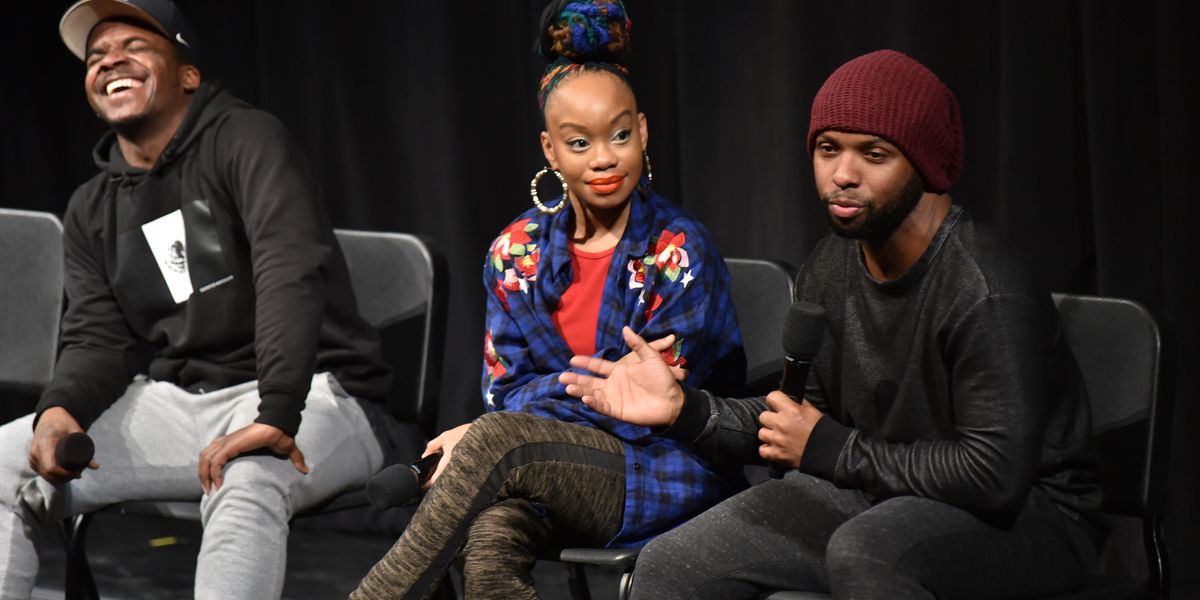Beyond Talkbacks: What Audience Engagement Looks Like in 2019
What happens during a performance is the product of the painstaking process of realizing an artistic vision. Whether held beforehand, afterward, offsite or online, audience discussions tend not to be so preordained, easily thrown off track without a skilled moderator at the helm.
“I’m someone who dreaded talkbacks and Q&As,” admits Bill Bragin, former director of public programming at Lincoln Center. “While I was in New York, a lot of the time it was just audience members trying to show off how smart they were.”
These events present a pile of difficult questions: How much do you reveal about a piece before it’s shown? How can a conversation designed to hit key points feel casual and spontaneous? How do you cater to the needs of diverse attendees, from novice dancegoers to lifelong fans to scholars and critics? And how do you avoid smothering dance with language, flattening all its complexity?
Preshow
Before a performance, “I don’t discuss what the work is about, ever,” says Melanie George, dramaturg and audience educator at the Lumberyard Center for Film and Performing Arts. “Instead, I might say, ‘Here are the things this artist values. Here are some of the questions they’re asking.’ And, ‘Hey, audience: We also have a job to do—here’s what our role is, what our responsibilities are.’ ”

Jeff Watts, Courtesy George
Norton Owen takes a similar tack as director of preservation at Jacob’s Pillow, where preshow prompts might include “Watch how the dancers relate to each other,” or “You might want to pay close attention to the text.”
“We aim to empower the viewer to make discoveries on their own,” Owen says, “by offering tools that will allow them to get the most out of what they’re about to see.” Setting too many expectations narrows the viewer’s field of vision. “And I make sure to have the artist tell me if anything is off-limits,” George adds.

Christopher Duggan, Courtesy Jacob’s Pillow
Postshow
While there’s seldom time after performances to employ the entire Critical Response Process pioneered by dancemaker Liz Lerman, George often borrows prompts from it: ” ‘What do you remember? What are you feeling?’ Questions like those are useful because they focus everyone on the work, as opposed to the people making it.”
Choreographer Camille A. Brown offers conversations that function almost like epilogues. “I never said my work can’t speak for itself,” she says, but certain reactions, especially to her BLACK GIRL: Linguistic Play, revealed just how many prejudices Brown has to confront. “People saw the white chalk and thought it was cocaine. How do I make that a teaching moment without shaming the person? Especially with work created by people of color, there can be issues in terms of how it gets translated.”

Peter Smith, courtesy of University Musical Society
Offsite
Relocating to the Middle East to help launch The Arts Center at NYU Abu Dhabi as its executive artistic director was a chance for Bragin to cultivate new methods. For one, he and his team tapped into the food-centered hospitality so integral to life on the Arabian Gulf, bringing performers, students and the public together around meals where open-ended prompts keep conversations connected to the work. While hosting Wayne McGregor’s Autobiography, based on the sequencing of the choreographer’s genome, Bragin reached out to biology faculty and students. Ragamala Dance Company’s visit helped the Center to build relationships with South Asian residents in the city. Traditional talkbacks, sometimes comoderated by students, are regularly on the menu too.

Courtesy of The Arts Center at NYU Abu Dhabi
Online
Lectures and artist talks have been part of the Pillow since it began in the 1930s, says Owen: “Those early presentations began with Ted Shawn talking to the audience.” Recently, the festival has moved nearly everything online, with program notes emailed in advance, postshow talks uploaded to YouTube and the extensive archives accessible at archives.jacobspillow.org. “When we have a company who’s been to the Pillow multiple times, we can show videos from prior appearances, talks and anything else that brings context to what our visitors are about to see. We want to offer as many types of engagement as possible, as nonjudgmentally as possible. ‘Let the information in however is most comfortable to you.’ That’s both powerful and empowering.”




